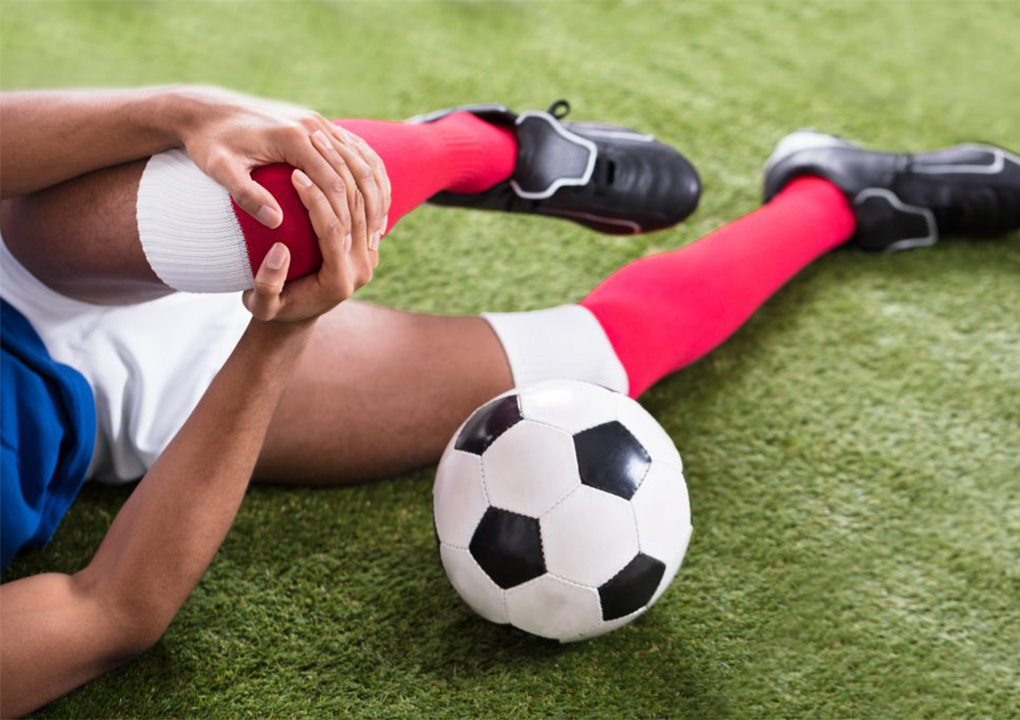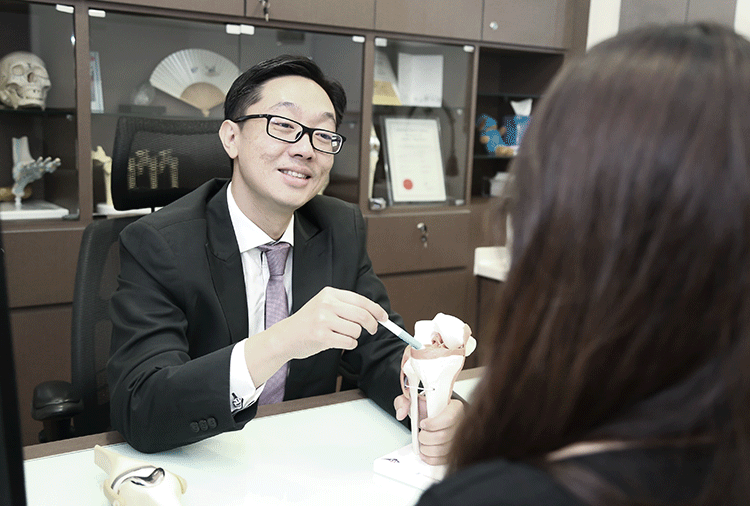What Is Anterior Cruciate Ligament (ACL)?
The ACL, or Anterior Cruciate Ligament, is one of the major ligaments in the human knee joint. Ligaments are strong, fibrous bands of tissue that connect bones. In the knee, the ACL specifically connects the femur (thigh bone) to the tibia (shin bone) and is critical in stabilising the joint.

Causes of ACL
Sports Activities
Non-Contact Movements
Direct Impact
Sudden Stops and Twists
Landing Incorrectly
Overextension
Gender and Anatomy
Previous ACL Injuries
Fatigue and Muscle Imbalance
Signs and Symptoms of ACL
Pain
Swelling
Instability
Audible "Pop" or "Snap"
Limited Range of Motion
Difficulty Walking
Bruising
Tenderness
Inability to Bear Weight
Diagnosis of ACL
Medical History
Physical Examination
A thorough physical examination of the knee is conducted. During the examination, the healthcare specialist will assess the following:
- Range of motion – To check for any limitations in knee movement.
- Joint stability – To assess the degree of joint laxity and the presence of any abnormal movement in the knee.
- Pain and tenderness – To identify areas of pain and tenderness in and around the knee.
- Swelling and effusion – To assess the degree of knee swelling.
Lachman Test
Drawer Test
Pivot Shift Test
Imaging Studies
While a clinical examination can strongly suggest an ACL injury, imaging studies are typically used to confirm the diagnosis and assess the extent of the damage. The most common imaging methods include:
Magnetic Resonance Imaging (MRI) – MRI provides detailed images of the internal structures of the knee, including the ACL. It can confirm the diagnosis, reveal the extent of the injury, and help identify any associated damage to other structures in the knee, such as meniscus tears.
Types of ACL
Partial ACL Tear
Complete ACL Tear
Treatment Options for ACL
Non-Surgical (Conservative) Treatment
1. Rest and Immobilization – Immediately after the injury, it’s important to rest the knee and protect it from further damage. In some cases, immobilisation with a knee brace or a hinged knee immobiliser may be necessary.
2. Physical Therapy – Physical therapy is a key component of non-surgical treatment. It focuses on strengthening the muscles around the knee, improving stability, and regaining range of motion. A physical therapist will design a personalised exercise program.
3. Use of Assistive Devices – Crutches may be used initially to help reduce weight on the injured leg and promote healing.
4. Bracing – A knee brace may be prescribed to provide support and stability during physical activity.
5. Activity Modification – It may be necessary to temporarily modify or avoid certain activities, especially high-impact or pivoting sports, to prevent further damage to the knee.
6. Anti-Inflammatory Medications – Non-steroidal anti-inflammatory drugs (NSAIDs) can help manage pain and reduce inflammation. Always follow your healthcare specialist’s recommendations regarding their use.
Surgical Treatment (ACL Reconstruction)
1. Graft Selection – The surgeon will choose a graft (tissue) to replace the torn ACL. Common graft options include using a portion of the patellar tendon, hamstring tendons, or donor grafts (allograft).
2. Arthroscopy – The surgeon will use minimally invasive arthroscopic techniques to insert small instruments and a camera into the knee joint to visualise and assess the extent of the injury.
3. Graft Insertion – The chosen graft is inserted into the knee joint through small incisions and secured in place using screws or other fixation devices.
4. Rehabilitation – After surgery, a comprehensive rehabilitation program is essential. Physical therapy will help restore strength, range of motion, and knee stability.
5. Return to Activity – Full recovery and return to high-impact activities can take several months. A gradual return to sports or activities is recommended under the guidance of a physical therapist or sports medicine specialist.
Anterior cruciate ligament (ACL) injuries can significantly impact one’s quality of life, particularly for individuals engaged in active or sports-related activities. The decision to pursue surgical or non-surgical treatment is made on a case-by-case basis.
Regardless of the chosen treatment path, rehabilitation and physical therapy play a vital role in recovery. A committed effort to regain strength, flexibility, and stability is key to restoring the knee’s functionality.
Consultation with an orthopaedic specialist is essential for accurate diagnosis and tailored treatment plans. With proper care and dedication to rehabilitation, individuals can achieve the best possible outcome and return to an active, pain-free life. Remember, recovery is a journey, and each step brings you closer to a healthier and more agile future.






